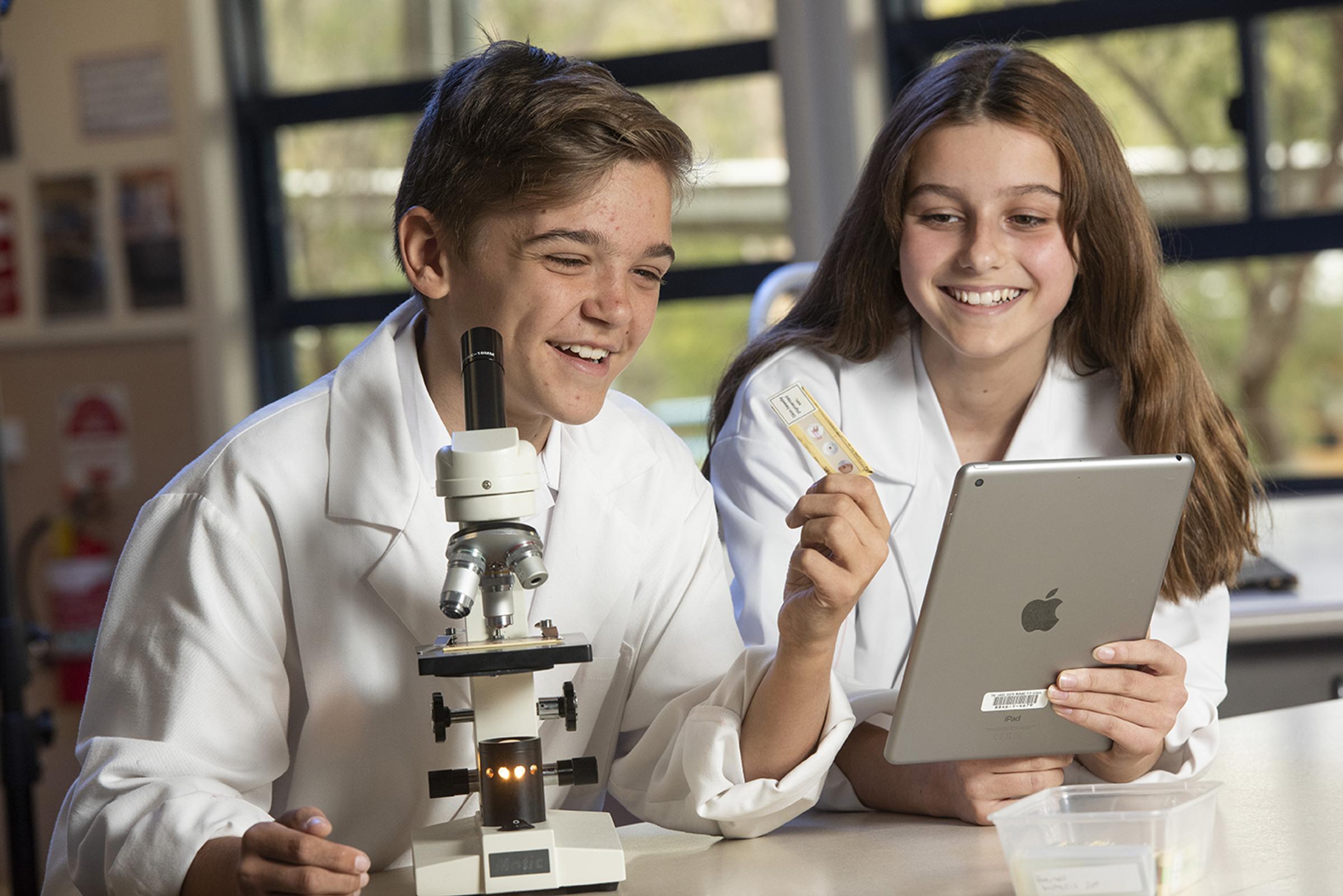Biology

BIOLOGY
Unit 1: How do living things stay alive?
Students investigate some of the challenges an organism has in sustaining life. The cell is examined as the structural and functional unit of life, from the single celled to the multicellular organism. Types of adaptations are examined that enhance organism survival and students consider the role homeostatic mechanisms play in maintaining the internal environment. Students consider how the planet’s biodiversity is classified and the factors that affect the growth of a population.
Outcome 1: Investigate and explain how cellular structures and systems function to sustain life.
Outcome 2: Explain how various adaptations enhance the survival of an organism.
Outcome 3: Design and undertake an investigation related to the survival of an organism or species, and draw conclusions based on evidence from collected data.
Unit 2: How is continuity of life maintained?
Students focus on cell reproduction and the transmission of biological information from generation to generation. Students examine the cell cycle and the process of DNA replication as well as the mechanisms of asexual and sexual reproductive strategies. The role of stem cells is explored and their potential use in medical therapies. Students use chromosome to explain the theory of inheritance, analyse patterns, interpret pedigree charts and predict outcomes of genetic crosses. A student directed research investigation of an issue related to genetics is also undertaken.
Outcome 1: Compare the advantages and disadvantages of asexual and sexual reproduction, explain how changes within the cell cycle may impact cellular, tissue or system function. Identify the role of stem cells in cell growth and differentiation in medical therapies.
Outcome 2: Apply understandings of genetics to describe patterns of inheritance, analyse pedigree charts, predict outcomes of genetic crosses and identify the implications of the uses of genetic screening and decision making related to inheritance.
Outcome 3: Investigate and communicate a substantiated response to a question related to an issue in genetics and/or reproductive science.
Unit 3: How do cells maintain life?
Students explore the cell as a dynamic system of interacting molecules that defines life. Understanding the workings of the cell enables an appreciation of both the capabilities and the limitations of living organisms. The convergence of cytology, genetics and biochemistry makes cell biology one of the most rapidly evolving disciplines in contemporary biology.
Outcome 1: Explain the dynamic nature of the cell in terms of key cellular processes including regulation, photosynthesis and cellular respiration, and analyse factors that affect the rate of biochemical reactions. Outcome 2: Apply a stimulus-response model to explain how cells communicate with each other, outline human responses to invading pathogens, distinguish between the different ways that immunity may be acquired, and explain how malfunctions of the immune system cause disease.
Unit 4 – How does life change and respond to challenges over time?
This unit considers the continual change and challenges to which life on Earth has been subjected. Students investigate the relatedness between species and the impact of various change events on a population’s gene pool. Students examine change in life forms using evidence from palaeontology, biogeography, developmental biology and structural morphology. They explore how technological developments in the fields of comparative genomics, molecular homology and bioinformatics have resulted in evidence of change through measurements of relatedness between species.
Outcome 1: Analyse evidence for evolutionary change, explain how relatedness between species is determined, and elaborate on the consequences of biological change in human evolution.
Outcome 2: Describe how tools and techniques can be used to manipulate DNA, explain how biological knowledge is applied to biotechnical applications, and analyse the interrelationship between scientific knowledge and its applications in society.
Outcome 3: Design and undertake an investigation related to cellular processes and/or biological change and continuity over time, and present methodologies, findings and conclusions in a scientific poster.
